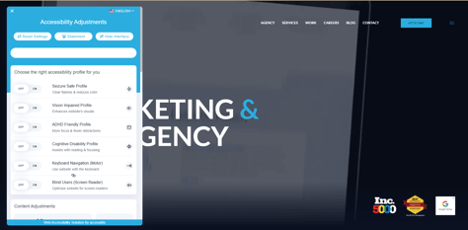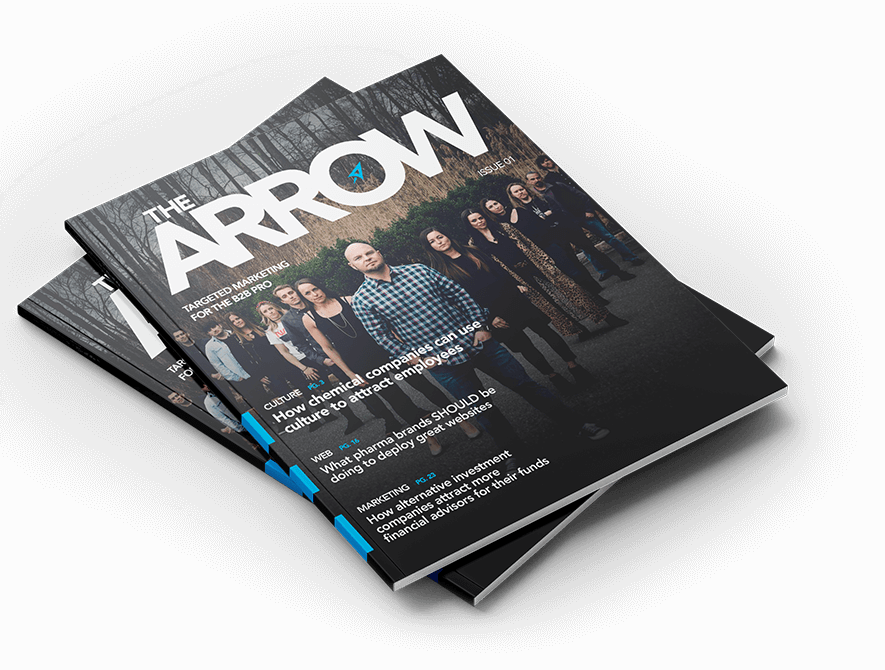Is Your Website Not ADA Compliant? What ADA Compliance Means and How To Make Your Website ADA Compliant
Chris Mulvaney is the CEO of CMDS. I make things... I’m the creative entrepreneur with passion for (re)making brands and inventing solutions to problems no one knows exist.
We are living in an era when inclusion is a defining theme, not only for this century, but also for the future millennium.
Providing adequate, easy-to-use functions for all types of cognitive, physical, and emotional disabilities is a top priority of our ever-evolving navigation of the internet. Yes, that does mean your website is a part of this transition.
It’s possible you may have heard about the recent lawsuit, “Robels v. Domino’s Pizza”, which was finally settled in June 2022 after six long years of litigation. Guillermo Robels, a man who is visually impaired, was unable to properly use Domino’s mobile ordering app. The final outcome? Victory for Robels and a swift change and fear for all businesses dependent on websites to promote and utilize their services. It has been deemed the most famous website accessibility lawsuit of all time.
A lot of the confusion came because of the restaurant chain not being ADA compliant in accordance with the most recent laws and regulations, which is why the lawsuit required appeals to its initial decisions. The internet as we know it today versus the internet when ADA compliances first were put into law is a vastly different landscape. Today, we are constantly connected to each other. Search engines like Google, for example, with integrated systems and additional apps to facilitate searches (think: Google Maps and Google My Business), create an interconnected network with businesses and consumers. Therefore, in theory, anyone can roam around the internet as they do in real life. So, just as your brick and mortar business should be ADA compliant to allow for all individuals to use, so should your website, according to this 2013 addition to the ADA law:
“Department has taken the position that title III covers access to Web sites of public accommodations. The Department has issued guidance on the ADA as applied to the Web sites of public entities, which includes the availability of standards for Web site accessibility” (ADA.gov PDF)
Being ADA compliant is not just some “business trend”; in fact, it is quite the opposite. Providing accessible websites to all types of consumers and clients is one of the most important aspects of online business. Inclusivity for all makes sure that you and your business are open to all types of consumers that won’t shy away because, for example, flashing imagery may be too much for them physically or there is no possible way to communicate with your site from their vantage point.
According to HealthLine in 2018, ADHD diagnoses have increased 42% over the past eight years in the United States. 6.1% of children are on ADHD medication. These are the same children that may grow up to be in business, or may be business owners or clients themselves, looking to work with your company. Similarly, of the U.S.’s population, 2.4% or nearly 8 million citizens (ages 16-75+) are visually impaired, according to the National Federation of the Blind in 2016. Disability is not always something that affects your mobility. More often than not, disabilities are cognitive or may suppress other senses, such as eyesight or hearing.
Don’t start sweating now if this is the first you’re hearing of it. This is all still a relatively new business expectation that most places are still not aware of. These regulations are not just expected of restaurants and mobile ordering apps, but are the future of websites as we know them. From small marketing agencies to multi-million dollar companies, ADA compliant websites will soon be a necessity.
As new provisions are created, it’s important to first check if your website is up to the basic standards of ADA compliance. Civic Plus provided a checklist of basic necessities for a “bare-bones” ADA compliant website as shown below:
“Level A – ADA Compliance Checklist
- Images have alternative text that can be read by screen reader software
- Video content includes captions
- Video or audio-only content is accompanied by a text transcript or description
- Links that are provided to media players are required to view content
- Headings are presented in a logical order
- Make sure “b” and “i” tags are replaced with “strong” and “em”
- There are not empty links or heading tags
- Presentation does not rely solely on color
- Automatically-played audio does not occur and can be stopped
- A keyboard can be used to navigate the site
- Keyboard focus is never stuck on one particular page elements
- Time limits provide notifications to the user
- Automatically scrolling or blinking content can be stopped
- No strobe effects or rapidly flashing colors occur on the site
- Skip navigation functionality allows keyboard users to access content quickly
- Page titles clearly and succinctly describe the page content
- Buttons and links are clearly and logically named
- The language of each page is identified in code
- Elements receiving focus do not change the content in a substantial way
- Invalid form input is identified to the user
- Forms have labels and legends that can be read by screen reader software
- There are no major validation errors”
At CMDS, we integrated an all-inclusive ADA complaint application that offers help for those prone to seizures, ADHD, blindness, deafness, and more, all in a conveniently placed and sized button. The button resides in the bottom left corner and provides easy access for people with most physical and cognitive disabilities.

Persons with ADHD may apply the “ADHD Friendly Profile” that halts all moving images and connects a rectangular highlight to your mouse. It lowers the brightness on the rest of the website to aid in digestion of the copy and resources. Each profile aims to provide the best quality for any sort of disability a person may have while accessing the internet.
Implementing ADA compliant integrations, especially those with individualized components to that aid in a range of persons with disabilities, is crucial to your website and your business. It not only affects your online presence, but may sever important relationships with clients that could not use your site. Managing your website properly and within internet regulations is paramount. If you don’t think you could be affected, just look back at the Robels v. Domino’s Pizza case as one of many other lawsuits moving forward every year. The American Bar Association (ABA) notes that “[s]ince 2018, website and mobile app accessibility lawsuits have made up roughly a fifth of all ADA Title III filings in federal courts, which now consistently exceed 10,000 lawsuits annually” amounting to an estimated 2,000 yearly cases and rising. This does not include state court filings or resolved demand letters and local cases, either.
At CMDS, we want to provide you information to discover what fits best with your company and explore which service best fits you and your clients. You can sift through every page, copy, and link on your website to ensure a Level A compliant website or you may want to take a back seat and continue to focus on your quarterlies, marketing strategies, etc. The process doesn’t need to be scary or complicated. We are here to help guide you through different ADA-friendly options to append to your website. We all work as a community and making sure we’re all supported in any way possible creates those lasting relationships and trustworthiness to you and your business.






